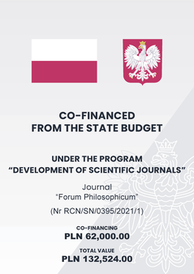- Home »
- Issues »
- 17/2 - Fall 2012 »
- Articles »
The Beauty of Christian Art
Abstract
This paper deals with beauty as we encounter it in Christian works of art. Three main points are argued:
i) Beauty, as it appears in the Christian work of art, is an invitation to delight and gratitude;
ii) Beauty, as we encounter it in the Christian work of art, asks of us both the deepening of discernment and the cultivation of desire;
iii) Beauty, as it is manifested in the Christian work of art, is not created by the artist but is bestowed as a gift of God.
Firstly, beauty must be recognised as giving delight. In defending this claim, the paper argues against theories which identify beauty with pleasure, and which devalue or dismiss beauty based on this false identification. Further, beauty does not only give, but also – as gift – makes a claim upon us. Gratitude is the appropriate response to beauty’s gift.
Secondly, beauty as manifested in beautiful particulars embedded in the material and cultural world requires discernment. Moreover, we must embody a real receptiveness to beauty – by becoming beautiful ourselves – through the cultivation of desire. A full response to beauty entails the reorientation of our vision as well as our volition towards the infinite beauty of God.
Thirdly, though beauty is manifestly present in made-made objects, it does so and is so as a gift of God. This understanding is supported by emphasising the Trinitarian nature of beauty. It is proposed that beauty is best identified not with the Son but with the Holy Spirit.
Keywords
- Hart, David Bentley
- Maritain, Jacques
- Tolstoy, Lev Nikolayevich
- aesthetics
- beauty
- Christian art
- David Bentley Hart
- Jacques Maritain
- theological aesthetics
- Lev Nikolayevic Tolstoy
Cite this article
Gustafsson, Daniel. "The Beauty of Christian Art." Forum Philosophicum 17, no. 2 (2012): 175–96. doi:10.35765/forphil.2012.1702.12.
Bibliography
Balthasar, Hans Urs von. The Glory of the Lord. Vol. I, Seeing the Form, translated by Erasmo Leiva-Merikakis. Edinburgh: T. & T. Clark, 1982. Bulgakov, Sergei Nikolaevich. “The Icon and Its Veneration (A Dogmatic Essay).” Translated by Boris Jakim. In Icons, and The name of God, 1–114. Grand Rapids, MI: Eerdmans, 2012. Dante Alighieri. The Divine Comedy: Inferno, Purgatorio, Paradiso. Translated by Allen Mandelbaum. Everyman’s Library. New York: A. A. Knopf, 1995. Farley, Edward. Faith and Beauty: A Theological Aesthetic. Aldershot: Ashgate, 2001. Hart, David Bentley. The Beauty of the Infinite: The Aesthetics of Christian Truth. Grand Rapids, MI: Eerdmans, 2003. Hopkins, Gerard Manley. Poems of Gerard Manley Hopkins now first published. Edited by Robert Bridges. London: Humphrey Milford, 1918. Maritain, Jacques. Art and Scholasticism. Translated by James F. Scanlan. London: Sheed & Ward, 1932. Nichols, Aidan. Redeeming Beauty: Soundings in Sacral Aesthetics. Aldershot; Burlington, VT: Ashgate, 2007. Scruton, Roger. Beauty. Oxford; New York: Oxford University Press, 2009. Tolstoy, Leo. What is art? Translated by Richard Pevear and Larissa Volokhonsky. London; New York: Penguin Books, 1995.





